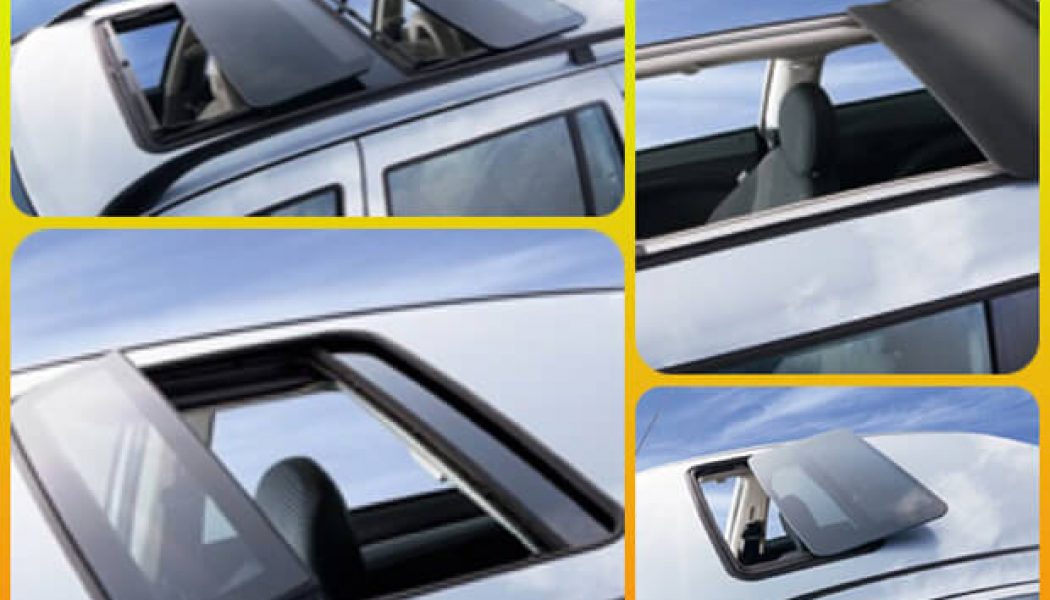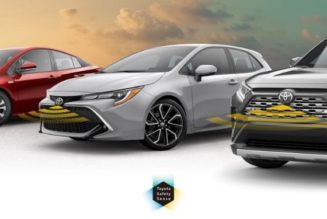In the beginning, no cars had roofs. Then the newfangled machines gained folding canvas tops, some with clear side curtains. Then Cadillac became the first manufacturer to offer fully enclosed factory bodywork. Before long, folks were looking for something in-between. Europe answered the call with canvas- or metal-covered roof openings and the patented Pytchley sunroof mechanism in the 1920s. Hillman even offered a sliding roof panel with glass windows on it on the 1933 Aero. Today, sunroofs, moonroofs, panoramic roofs, T-tops, or targa tops are widely available on most new vehicles, each offering something in between a fixed roof and a full convertible. Here’s how to tell the two best-known versions—moonroofs and sunroofs—apart:
Are a Moonroof and a Sunroof the Same Thing?
In common parlance today, yes. Semantic historians will regale you with stories of how a “sunroof” was traditionally an opaque panel, generally of metal or canvas, and that Ford marketing whiz John Atkinson coined the name “moonroof” to refer to the optional roof conversion (performed by American Sunroof Corporation) introduced on the 1973 Lincoln Mark IV, which replaced the metal panel with a silver-tinted tempered-glass one and a sliding interior sunshade to block the light entirely if desired.
The florid ad copy read, “When open, you see the Moon and it sees you, but when closed only you have the view.” So, historically no, they are not the same. Sunroof means no light or air when the roof is closed (think of a sunshade); moonroof is a glass sunroof you can look through. But today almost nobody sells cars with an opaque movable “sunroof,” so the words are used interchangeably.
Which Is Better, a Sunroof or Moonroof?
A glass panel paired with a fully opaque sunshade provides the greatest utility in offering full light and wind when fully opened, brighter ambiance and a view of tall buildings or mountains with the outer panel closed and the sunshade open, and the option of no light at all when the sun is directly overhead. Direct high-angle sunshine can cause headaches for some people, so be wary of vehicles like most Teslas, which offer fixed glass roofs with no option of a sunshade at all, or vehicles like some Volkswagens and Minis that offer glass roofs with mesh-like sunshades that still admit a lot of light.
What Are the Different Types of Moonroofs and Sunroofs?
Built-in roofs typically offer the option of raising the rear of the panel to vent or exhaust air out of the interior, or sliding the panel fully open, stowing the panel between the roof and the headliner.
Spoiler roofs offer the same pop-up vent option, but when opening, it remains above the roof as it slides back.
Pop-up roofs merely pop up at the back to vent and in some cases allow the entire panel to be removed and stored. These were popular in the aftermarket.
Lamella roofs feature numerous glass or opaque panels that can vent and then slide back like a set of horizontal Venetian blinds. The Mercedes ML-Class and Pontiac G6 offered lamella roofs, but the design proved problematic for both.
Panoramic roofs typically offer at least a view out if not open air above both the front and rear seats. The Lincoln MKZ’s large glass spoiler-type Panoramic Retractable Vista Roof ($2,000) slides down to cover the rear window.
What Are the Pros and Cons of a Moonroof or Sunroof?
Pros: Sunshine lifts people’s spirits, as can fresh air, and the amount of both that ends up being admitted via a sunroof or moonroof is less likely to burn skin and muss hair than what you get with a full convertible. Except in the increasingly rare case of canvas examples, a sunroof/moonroof is generally more secure/theft-resistant than a canvas convertible top. And a rigid panel like a sunroof/moonroof is easier to seal than more elaborate T-tops, targa tops, and convertibles.
Cons: The glass panel, seals, drain tubes, frame, tracks, motors, and mechanisms all add noticeable mass up high in the vehicle. This raises its center of gravity, which has a deleterious effect on vehicle handling. The mechanism to operate sunroof/moonroof designs generally end up impinging on interior headroom. (Spoiler and lamella designs don’t typically rob headroom.)
How Much Does a Sunroof/Moonroof Cost?
Manufacturers frequently bundle options, making it difficult to know exactly what individual items cost, but figure the value add is typically in the $1,000 range for a new moonroof (which is what most of them are today). Panoramic roofs can double that price or more. Although sunroofs and moonroofs will depreciate along with the car, simply having one can make a used vehicle easier to sell. And if you’re in the used vehicle market, it is still possible to have an aftermarket sunroof installed in an existing vehicle. These pop-up/removable panels can cost $300 to $800 to install but are more likely to leak, rust, or experience other problems than a factory-installed unit.









